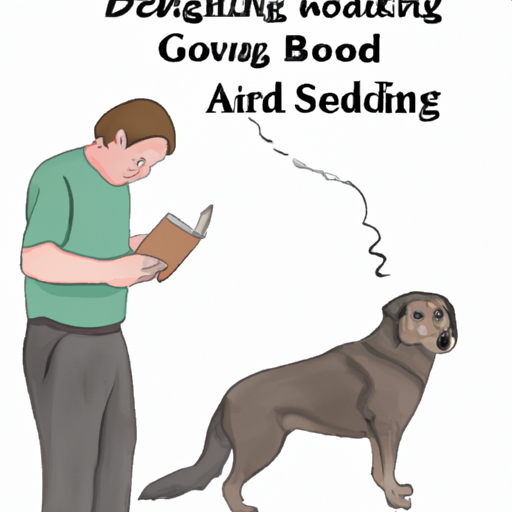We’ve all witnessed it. You come home after a long day, eager to see your furry friend, only to find your dog’s tail is down. It’s a sight that can instantly fill a dog owner with concern. Dogs communicate in a variety of ways, and one of the most important is through their body language, primarily their tail. However, interpreting a dog’s tail language can sometimes be confusing, especially when it’s down. So, what does it mean when my dog’s tail is down?
Table of Contents
1. Dog Tail Language: A Quick Overview
2. Reasons for a Down Tail: Interpreting the Signs
3. How to Respond: Proper Care for a Down-Tail Dog
4. Frequently Asked Questions
Key Takeaways
– A dog’s tail position can convey a range of emotions and health conditions
– Understanding the reasons behind your dog’s down tail can help in providing appropriate care
– A down tail is not always a cause for concern, but persistent down tail may require veterinary attention
Dog Tail Language: A Quick Overview
Dogs, like humans, have their unique ways of communicating. While we might express our emotions through facial expressions and tone of voice, dogs communicate primarily through body language, and their tails are an integral part of this language. By paying attention to your dog’s tail and its positions, you can gain insights into your dog’s emotional state and health.
A dog’s tail can indicate a range of emotions. A wagging tail usually signifies excitement or happiness. An upright tail can indicate alertness or dominance, while a tail tucked between the legs often signifies fear or submission. But what about when your dog’s tail is down? This can be a bit more complicated to interpret, and there are several reasons why your dog might be holding their tail down.
Reasons for a Down Tail: Interpreting the Signs
Here are some common reasons why your dog may have its tail down and what they could mean.
-
Relaxation: If your dog is calm and relaxed, they may hold their tail down. This posture is natural and doesn’t necessarily indicate anything is wrong.
-
Submission: Sometimes, a dog may lower its tail when interacting with other dogs or people as a sign of submission or deference. This is particularly common in social situations where your dog might feel the need to show respect to a more dominant dog or person.
-
Fear or Anxiety: Dogs may also lower their tails when they’re scared or anxious. This could be due to a variety of factors such as a loud noise, unfamiliar environment, or a stressful situation. A lower tail can be a sign that your dog is trying to make themselves look smaller and less threatening.
-
Health Issues: If your dog is consistently holding their tail down and it’s accompanied by other symptoms like loss of appetite, lethargy, or difficulty sitting, it could indicate a health issue. Conditions such as anal gland problems, spinal issues, or infections can cause discomfort that results in a down tail.
Understanding these signs can help you better care for your pet. If you notice a sudden change in your dog’s tail position or behavior, it’s essential to pay attention and, if necessary, seek veterinary advice.
How to Respond: Proper Care for a Down-Tail Dog
If your dog’s tail is down, the first step is to observe their overall behavior. Check for other signs of distress or illness, such as changes in eating habits, lethargy, or abnormal behavior. If these symptoms are present, consult with a veterinarian as soon as possible.
For instance, if your dog is showing signs of fear or anxiety, try to identify the source of their distress and remove it if possible. Comfort your dog and help them feel safe. Your dog may also benefit from behavioral training to manage stress and fear.
However, a down tail isn’t always a cause for concern. It could be a natural posture for your dog when they are relaxed or tired. It’s essential to know your dog’s normal behavior to accurately interpret their tail language. If you are unsure, consider seeking advice from a professional dog trainer or a dog behaviorist.
Frequently Asked Questions
1. Why is my dog’s tail down all the time?
If your dog’s tail is consistently down and it’s not their natural posture, it may indicate a health issue. It could be due to physical discomfort, such as anal gland issues or spinal problems. Consult a veterinarian if you’re concerned.
2. Can a dog’s tail be down due to weather?
Yes, some dogs may lower their tails in response to cold weather. This is a natural behavior that helps them conserve body heat.
3. How can I tell if my dog’s down tail is a sign of illness or just relaxation?
Observation is key. If your dog’s tail is down but they’re otherwise acting normal, it’s likely just relaxation. However, if the down tail is accompanied by other symptoms like loss of appetite, lethargy, or abnormal behavior, it could be a sign of illness.
In conclusion, a dog’s tail is a powerful communication tool that can provide valuable insights into their emotional state and health. Understanding your dog’s tail language can help you cater to their needs more effectively. Remember, every dog is unique, and their tail positions can vary based on their breed, mood, and individual personality. So, when your dog’s tail is down, approach the situation with empathy, observation, and if necessary, professional advice. With the right knowledge and care, you can ensure your dog’s happiness and well-being.



